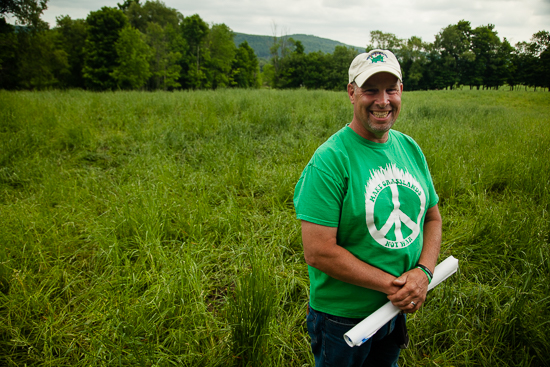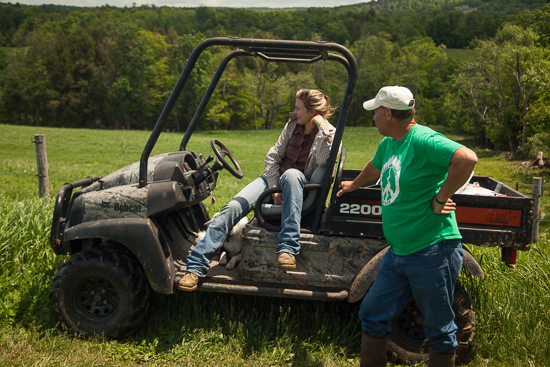The Grass Whisperer gets to the root of grazing
Troy Bishopp is a grazing specialist and a ‘grass connoisseur’
At Endless Trails Farm in Hubbardsville, N.Y., Troy Bishopp is looking for cow pies.
“There’s a little bit there, but overall there isn’t a whole lot of manure,” he says, explaining to the farm's manager. “Every rotation we’re going to want more.”
Bishopp is a conservation specialist with New York’s Madison County Soil and Water Conservation District and the Upper Susquehanna Coalition, and among the services he provides is advice on how grassland farmers can get the most out of their pastures. With 30 years of experience, he has learned to pay attention to the subtleties that only come with walking out in a field and talking with farmers.

“I’m constantly looking, because wherever that cow manure lands is where there’s going to be more grass than not,” Bishopp says. This passion for grass has led to him being called the Grass Whisperer, a moniker first bestowed on him by his friend Dick Warner during a visit to Washington to educate congressional districts about grass-based agriculture in New York.
Bishopp has worked with Endless Trails Farm for about eight years, first to set up some conservation practices like stream buffers, then helping with fencing and offering rotational grazing advice. When he visits a farm, his tools are cheap—a plastic grazing stick helps him assess how many pounds of feed are in a pasture, and a reel of electrified tape lets him keep animals on and off sections of pasture, a practice he prescribed for Endless Trails.

“There was no real system of fencing or paddock rotation [on this farm]. And so usually in July and August there wasn’t a whole lot of grass here,” Bishopp says. “Implementing strategic fencing, water spots around the farm, water tubs, and then allowing the grass and the pastures to rest for a month or two, always made a lot of grass which actually sequestered any rain that came, which is huge up here.”
The water infiltration resulted in more grass for cattle at the farm, and also less runoff, including sediment and nutrients, running into streams and ultimately into the Chesapeake Bay. In 2011, the Madison County Soil and Water Conservation District named Endless Trails its Conservation Farm of the Year.
“Generally speaking, we want to retain our topsoil, have good water infiltration and keep the waters clean,” Bishopp says. “When you produce a lot of feed and you do those things that make you money, conservation comes right along with it.”
To view more photos, visit the Chesapeake Bay Program’s Flickr page.

Comments
Troy is an outstanding example of the great work Soil and Water Districts do addressing watershed issues.
Thanks Will. I cried it was so good. Made me feel like I was important. GW
Thank you!
Your comment has been received. Before it can be published, the comment will be reviewed by our team to ensure it adheres with our rules of engagement.
Back to recent stories